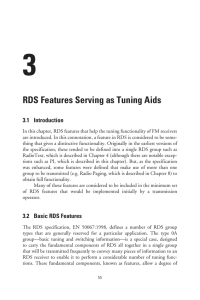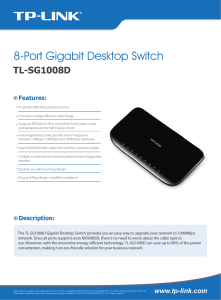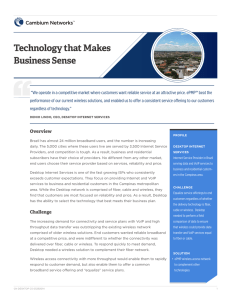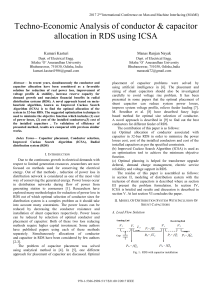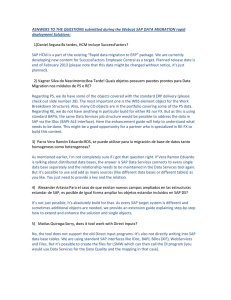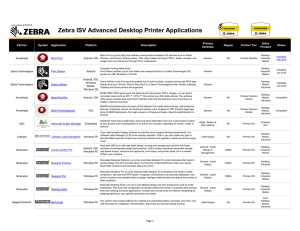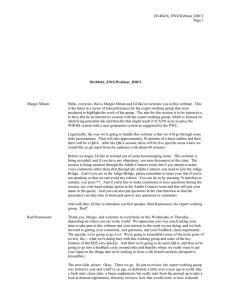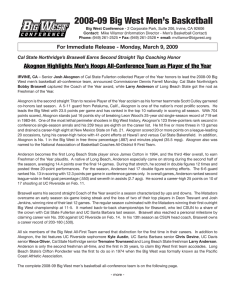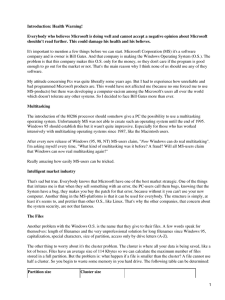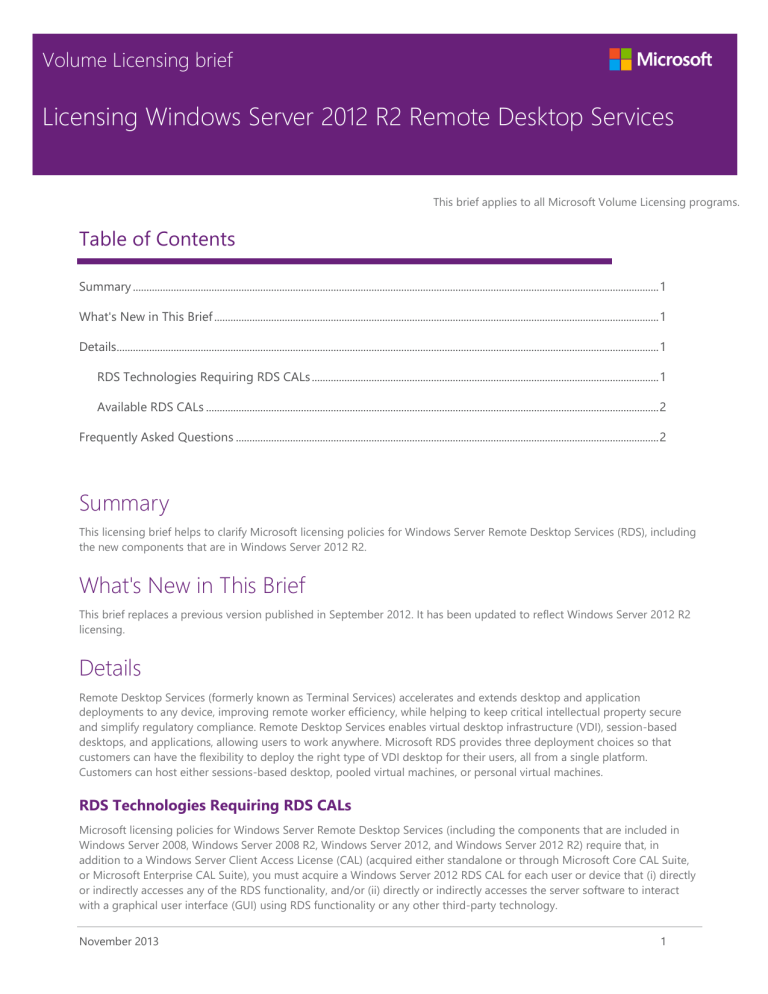
Volume Licensing brief Licensing Windows Server 2012 R2 Remote Desktop Services This brief applies to all Microsoft Volume Licensing programs. Table of Contents Summary .................................................................................................................................................................................................. 1 What's New in This Brief .................................................................................................................................................................... 1 Details........................................................................................................................................................................................................ 1 RDS Technologies Requiring RDS CALs ................................................................................................................................ 1 Available RDS CALs ....................................................................................................................................................................... 2 Frequently Asked Questions ............................................................................................................................................................ 2 Summary This licensing brief helps to clarify Microsoft licensing policies for Windows Server Remote Desktop Services (RDS), including the new components that are in Windows Server 2012 R2. What's New in This Brief This brief replaces a previous version published in September 2012. It has been updated to reflect Windows Server 2012 R2 licensing. Details Remote Desktop Services (formerly known as Terminal Services) accelerates and extends desktop and application deployments to any device, improving remote worker efficiency, while helping to keep critical intellectual property secure and simplify regulatory compliance. Remote Desktop Services enables virtual desktop infrastructure (VDI), session-based desktops, and applications, allowing users to work anywhere. Microsoft RDS provides three deployment choices so that customers can have the flexibility to deploy the right type of VDI desktop for their users, all from a single platform. Customers can host either sessions-based desktop, pooled virtual machines, or personal virtual machines. RDS Technologies Requiring RDS CALs Microsoft licensing policies for Windows Server Remote Desktop Services (including the components that are included in Windows Server 2008, Windows Server 2008 R2, Windows Server 2012, and Windows Server 2012 R2) require that, in addition to a Windows Server Client Access License (CAL) (acquired either standalone or through Microsoft Core CAL Suite, or Microsoft Enterprise CAL Suite), you must acquire a Windows Server 2012 RDS CAL for each user or device that (i) directly or indirectly accesses any of the RDS functionality, and/or (ii) directly or indirectly accesses the server software to interact with a graphical user interface (GUI) using RDS functionality or any other third-party technology. November 2013 1 Licensing Windows Server 2012 Remote Desktop Services Remote Desktop Services functionality is defined as those features or services that are running when enabling the Remote Desktop Services role and/or role service(s) in Windows Server 2008, Windows Server 2008 R2, Windows Server 2012, or Windows Server 2012 R2. This includes, but is not limited to, Remote Desktop Gateway, RemoteApp network software, Remote Desktop Web Access, Remote Web Access, Remote Desktop Connection broker, Remote Desktop session host, Remote Desktop Virtualization host, and RemoteFX. Note: No RDS CALs are required for up to two users to access instances of the server software for administration purposes. Available RDS CALs The following types of RDS Server Client Access Licenses are available: RDS Device CAL: Permits one device (used by any user) to use Remote Desktop Services functionality on any of your servers. RDS User CAL: Permits one user (using any device) to use Remote Desktop Services functionality on any of your servers. RDS External Connector: Permits multiple external users to access a single Remote Desktop server. If you have multiple servers, you need multiple external connectors in addition to any required Windows Server External Connectors. You may choose to combine RDS Device CALs and RDS User CALs simultaneously with the server software. You may permanently reassign your device CAL from one device to another or your user CAL from one user to another. You may temporarily reassign your device CAL to a loaner device while the first device is out of service, or reassign your user CAL to a temporary worker while the worker is absent. Frequently Asked Questions 1. Is this a change from Windows Server 2012 licensing? No. The same licensing rules applied for Windows Server 2012 as well as Windows Server 2008 R2. 2. Is there a new R2 CAL in Windows Server 2012 R2? No. There are no new Windows Server 2012 R2 RDS CALs. Windows Server 2012 RDS CAL will provide access to the Windows Server 2012 R2 functionality. 3. Do I need an RDS CAL if I am using a third-party technology like Citrix XenApp, Citrix XenDesktop, Ericom PowerTerm WebConnect, Quest Virtual Access Suite, GraphOn Go-Global, etc. to directly or indirectly access the server software to interact with the GUI? Yes. An RDS CAL is required for any technology used to directly or indirectly interact with the GUI. This includes (but is not limited to) using Microsoft Remote Desktop Services or other third-party software that enables multiuser scenarios on Windows Server. 4. What version of the RDS CALs do I need? The CAL version must correspond to the server software version it accesses. Older version of CALs cannot be used with the newer version of the server software, but newer version RDS CALs can be used with an older version of the server software as defined in the interoperability matrix at: http://social.technet.microsoft.com/wiki/contents/articles/14988.rds-and-ts-cal-interoperability-matrix.aspx. The only exception to this rule are the R2 server releases where the older CALs can sometimes work with the newer R2 release of server software. For example, Windows Server 2012 RDS CALs can be used with Windows Server 2012 R2, and there are no new Windows Server 2012 R2 RDS CALs required. Hence, the current requirement is that you need at least a Windows Server 2012 RDS CAL to access RDS on Windows Server 2012 R2 servers. November 2013 2 Licensing Windows Server 2012 Remote Desktop Services 5. Do I need an RDS CAL if I am not running a multiuser environment but use functionality in Remote Desktop Services—for example, Remote Desktop Gateway? Yes. An RDS CAL is required to use any functionality included in the Remote Desktop Services role in Windows Server. For example, if you are using RDS Gateway and/or Remote Desktop Web Access to provide access to a Windows client operating system on an individual PC, both an RDS CAL and Windows Server CAL are required. 6. Do I have to acquire RDS CALs if I am only remotely administering Windows Server operating systems by using Remote Desktop for Administration? No. Up to two users may connect to the Windows Server operating system simultaneously to perform administrative functions without needing any RDS CALs. Additional administrative users need the appropriate RDS CALs. 7. If I am using VMware to enable a VDI solution, do I need an RDS CAL? If the solution uses any RDS roles (Remote Desktop Gateway, Remote App, RD Web Access, Remote Web Access, RD connection broker, RD Session Host, RD Virtualization Host, or RemoteFX), then an RDS CAL is required. 8. Where can I learn more? You can find additional information in the Microsoft Product Use Rights (PUR). © 2013 Microsoft Corporation. All rights reserved. This document is for informational purposes only. MICROSOFT MAKES NO WARRANTIES, EXPRESS OR IMPLIED, IN THIS DOCUMENT. This information is provided to help guide your authorized use of products you license; it is not your agreement. Your use of products licensed under your volume license agreement is governed by the terms and conditions of that agreement. In the case of any conflict between this information and your agreement, the terms and conditions of your agreement control. Prices for licenses acquired through Microsoft resellers are determined by the reseller. November 2013 3
